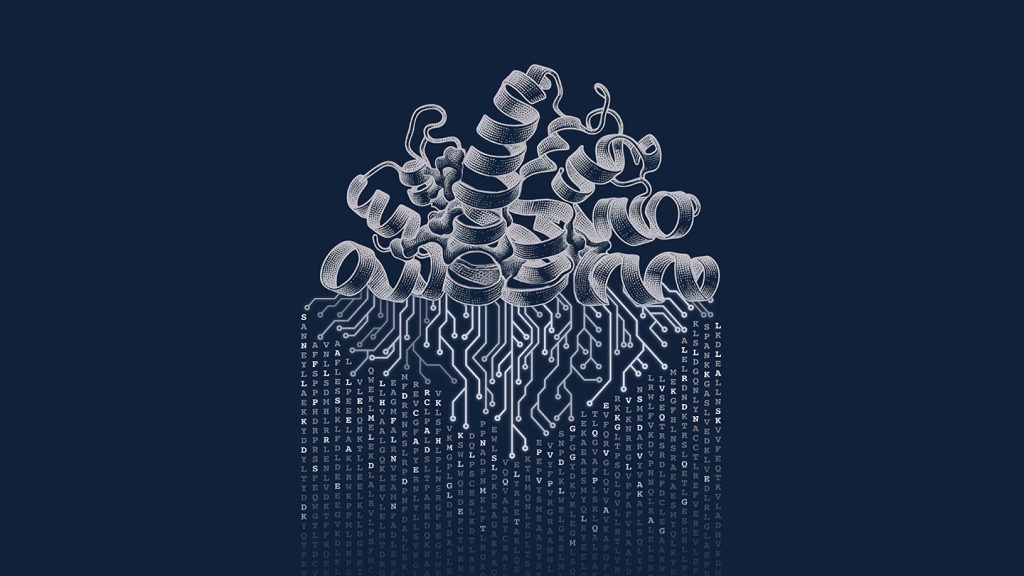Unlocking the Depths of Protein Science: How AI Tools Are Revolutionizing Research
Generative artificial intelligence (AI) is pioneering a new wave of exploration in fundamental biology. It’s not just a tool from the tech world anymore—it's becoming an essential partner for scientists focused on unraveling the complexities of proteins, the dynamic workhorses behind every cellular function.
The Protein Puzzle: A Challenge for Scientists
If DNA symbolizes an organism’s grand blueprint, proteins embody the actual construction—transforming genetic codes into functional realities. Yet, the process of constructing proteins is fraught with complexity. Post-production modifications often lead to discrepancies from the original genetic roadmap, resulting in hidden or unidentified proteins that are historically challenging to detect.
Researchers are making strides with two groundbreaking AI tools designed to illuminate these elusive protein structures, as reported on March 31 in Nature Machine Intelligence. These innovative models aim to decode proteins that traditional detection methods often overlook, offering new hopes for medical advancements—from enhanced cancer treatments to deeper understandings of unexplained animal abilities.
Meet InstaNovo and InstaNovo+: The New Frontiers in AI Protein Analysis
The AI models, InstaNovo (IN) and InstaNovo+ (IN+), are heralded as transformative advancements in protein research. According to Benjamin Neely, a chemist at the National Institute of Standards and Technology, these tools bring scientists closer to what he describes as the "holy grail" of protein studies: deciphering the identities of previously unstudied proteins on a grand scale.
How InstaNovo Works
InstaNovo operates similarly to OpenAI’s GPT-4 transformer model, translating the intricate peaks and valleys of a protein’s "fingerprint" collected through mass spectrometry into probable amino acid sequences. This process not only reconstructs hidden proteins but also aids in their identification.
The Evolution of InstaNovo+
On the other hand, InstaNovo+ leverages a diffusion model akin to an AI image generator. It takes the same foundational data and progressively refines it, filtering out noise to reveal clearer protein profiles.
A Leap Forward: The AI-Driven Future of Protein Sequencing
While InstaNovo and InstaNovo+ are not the first AI models to tackle protein sequencing, they mark remarkable improvements in technology, thanks in part to the expanding protein analysis databases such as Proteome Tools. This vast resource has played a pivotal role in training these AI models. Crucially, their analyses transcend existing databases—they can infer new protein segments not yet cataloged, opening doors to a wealth of previously uncharted knowledge.
Benchmarking Against the Competition
In head-to-head comparisons, both InstaNovo and InstaNovo+ have shown exceptional performance, particularly in complex sequencing tasks like identifying human immune proteins—a notoriously difficult area due to their size and unique amino acid compositions. Notably, InstaNovo outperformed conventional database searches, identifying over 35,000 candidate peptides, while InstaNovo+ achieved even greater success.
Addressing Real-World Biological Questions
The implications of these advancements extend beyond theoretical exploration. Amanda Smythers, a protein analysis expert at Dana-Farber Cancer Institute, anticipates using these tools to unravel key biological questions—like why pancreatic cancer often leads to severe muscle wasting. The potential to discover the proteins created by cancer cells could unveil crucial insights that drive new treatment protocols.
Discovering Hidden Potential: The Future of Protein Research
By revealing obscured protein sequences—whether from cancer cells or the unique kidneys of stingrays—these AI tools offer the potential to neutralize harmful proteins and harness beneficial ones, such as in therapeutic applications for diseases.
Navigating Limitations: The Realities of AI Tools
Despite their groundbreaking capabilities, the InstaNovo tools are not without their limitations. The study authors caution against false positives, estimated to be around 5 percent, which necessitates further verification. Experts, including Konstantinos Kalogeropoulos from the Technical University of Denmark, stress the importance of recognizing these tools as supplements, not replacements, to existing database searching methods.
William Noble, a computer scientist at the University of Washington, highlights the need for continual evaluation of how best to leverage these AI advancements. According to Smythers, “There’s never one single tool that’s perfect for every job,” reiterating that progress in the field relies on a multifaceted approach.
A New Era of Discovery: Embracing the AI Revolution
As scientists increasingly harness the power of AI to decode the challenges surrounding protein research, the future appears promising. The potential for AI-driven discovery in proteomics is boundless, paving the way for breakthroughs that could reshape our understanding of life itself. With tools like InstaNovo and InstaNovo+, there’s something remarkable on the horizon—a deeper, clearer image of the proteins that define our existence.
Stay informed about the latest scientific breakthroughs by signing up for our newsletter, and join the ever-evolving conversation around the intersection of AI and biology.
Further Reading
AI in Protein Research: Past, Present, and Future
Advancements in AI Protein Sequencing: What Lies Ahead
Embrace the future of protein research, and discover how advancements in AI can lead us into uncharted territories of biological innovation!






